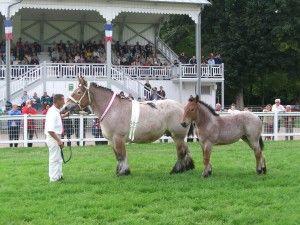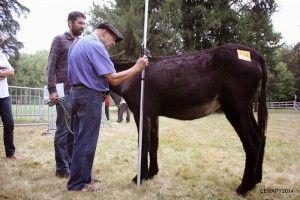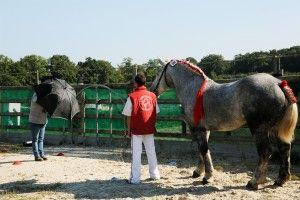Equine Profiling
What is this?
To profile is to describe with the goal of comparing individuals objectively. It is then possible to provide the keepers of stud books, breeders, and users with reliable information that will enable them to make choices and to meet their needs for selection, preservation and commercialisation.
The Goals of Profiling

© UECRA – Ardennais Draft
Profiling makes it possible to meet the following needs:
- Selection. Collectively, it is the national breed associations which define overall selection goals for their breed according to the qualities that are sought out: abilities, health, temperament, conformation, gait, colour etc. However, a varied and individual profiling makes it possible for each breeder to use the various tools on offer to think through couplings.
- Preservation: This is also a collective organisation specifically for endangered breeds. The tools make it possible to manage genetic diversity. Those same tools also serve to maintain diversity in breeds that are subject to severe selection-related pressure.
- Commercialisation: Certain tools make it easier for users to make their choice during transactions. The criteria that are observed are not necessarily hereditary, but make it possible to compare individuals.
Why do equine profiling?

© ANR – Pyrenees Donkeys
Introducing profiling using objective measures makes the following possible:
- An earlier diagnosis of abilities. This could lead to optimising how the horse’s career is oriented.
- Information for the owner for the strategic enhancement of the horse (orientation and target level), and thus an economic stake for the breeder.
- Objective information for the buyer on a horse’s aptitudes, and thus a commercial impact which could seal a sale.
- Contributing to compiling analytical indices on the different aptitudes of horses, which could come into play in the breed’s selection and breeding.
- The potential for the use of genomic data
Source: les outils characterisation (Profiling Tools), IFCE
Profiling Temperament
What is temperament ?
Temperament is a set of behavioural characteristics (called “traits”) which remain stable in time and in different situations.
Nowadays, temperament is defined according to 5 criteria:
- Fear: reaction to new and sudden events

© JL Dugast – Percheron
- Gregariousness: reaction to being separated from social group
- Sensibility: reaction to environmental sensory stimuli, such as touch
- Responsiveness to humans: reaction when faced with people
- Activity: Amount of movement and physical activity
These criteria were defined through scientific tests. They can be measured and, for each of them, it has been possible to put in place a test that can measure a horse’s reactions on a grading scale. This is how temperament tests were developed
Temperament and use
There is no such thing as a “good” or “bad” temperament. But it is possible to define the type of temperament that is best suited to a particular use.
Effectively, horses will be better suited to learning certain tasks, or better suited to certain riders, depending on their temperament. So, riders who are looking for a high-level horse will appreciate a horse with greater touch sensibility, and will easily be able to deal with skittish horses. On the other hand, a horse that is well-suited to a beginner will have less tactile sensibility and is unlikely to be scared by something new.
However, it is important to keep in mind that temperament is not the only element in matching a horse to a particular use or in carrying out a task at a specific time: its hormonal level, how it perceives its environment, and its past experiences can affect its attention, its receptiveness and its ability to learn. Furthermore, its temperament can evolve based on its living conditions and its relationship with people.
Source: Source : le tempérament du cheval (Equine Temperament), IFCE
Why show an interest in the profiling of horses?
The behaviour of a horse and its temperament (personality) are key points in the use of horses. The quality of the relationship between people and horses is increasingly important nowadays.
Several market studies carried out among horse buyers in France, Ireland and Poland show that a horse’s character is the top criterium when choosing a sports or leisure (whatever the activity) horse to buy.
That is why SFET has been assisting and supporting since 2013 the different breeds that are moving towards temperament profiling.
For More information about : Equine Profiling
- > http://www.haras-nationaux.fr/information/accueil-equipaedia/comportement-ethologie/cheval-et-vie-domestique/le-temperament-du-cheval.html (French only)
- > http://www.haras-nationaux.fr/information/accueil-equipaedia/comportement-ethologie/appreciation-du-comportement-et-du-temperament/tests-de-temperament.html (French only)